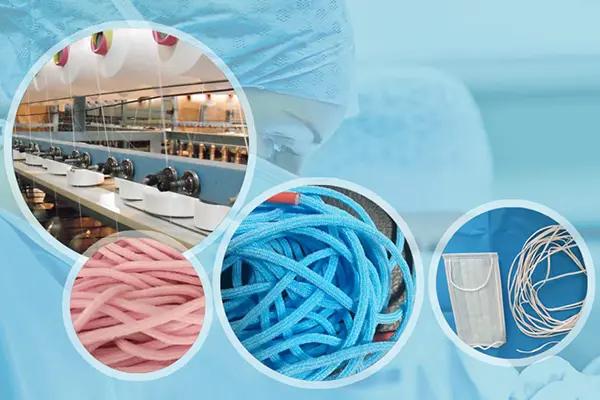Unveiling the Fabric of Protection: The Raw Materials of Nonwoven Medical Doctor Face Mask
In the ongoing fight against airborne diseases, non-woven face masks have emerged as a crucial line of defense, providing a barrier against respiratory droplets and pathogens. These versatile masks, characterized by their lightweight, disposable nature, play a pivotal role in protecting both individuals and communities. Understanding the raw materials that go into these masks is essential for appreciating their effectiveness and making informed choices about their use.
The Foundation of Nonwoven Medical Doctor Face Mask: Polypropylene
Polypropylene, a synthetic polymer, forms the backbone of most non-woven face masks. Its unique properties, including its strength, flexibility, and resistance to water and moisture, make it an ideal material for filtration and protection. Polypropylene fibers can be spun into very fine filaments, creating a dense, non-woven fabric that can effectively filter out airborne particles.

Enhancing Filtration with Meltblown Non-Woven Fabric
Meltblown non-woven fabric, a type of non-woven fabric produced by extruding molten polymer through a high-velocity air stream, plays a critical role in providing high-level filtration in non-woven face masks. The thin, randomly oriented fibers of meltblown fabric create a dense network that can capture even the smallest airborne particles, including viruses and bacteria.
Adding Comfort and Aesthetics with Spunbond Non-Woven Fabric
Spunbond non-woven fabric, another type of non-woven fabric produced by mechanically spinning polymer filaments, is often used in the outer layer of non-woven face masks. Spunbond fabric provides a soft, comfortable feel against the skin and enhances the overall aesthetic appeal of the mask.
Additional Materials for Enhanced Protection and Functionality
In addition to the core materials of polypropylene, meltblown, and spunbond non-woven fabrics, some non-woven face masks may incorporate other materials for enhanced protection and functionality:
-
Activated carbon: Activated carbon is a porous material that can adsorb odors and gases, providing additional protection against airborne contaminants.
-
Antimicrobial agents: Antimicrobial agents can be incorporated into the mask material to inhibit the growth of microorganisms, reducing the risk of cross-contamination.
-
Water-resistant coatings: Water-resistant coatings can be applied to the mask's outer layer to enhance its ability to repel water droplets and maintain its effectiveness in humid environments.
Choosing the Right Nonwoven Medical Doctor Face Mask
With a diverse range of non-woven face masks available, selecting the most appropriate one depends on the individual's needs and the specific environment in which the mask will be used. For everyday activities, a high-quality three-layer non-woven face mask with meltblown filtration may be sufficient. However, for high-risk environments, such as healthcare settings or crowded indoor spaces, a respirator with a higher level of protection may be necessary.
Conclusion
Non-woven face masks, with their carefully selected raw materials and innovative designs, have become indispensable tools in the fight against airborne diseases. Understanding the materials that go into these masks empowers individuals to make informed choices about their personal protective equipment and contribute to a safer, healthier world.
Post time: 11月-20-2023





